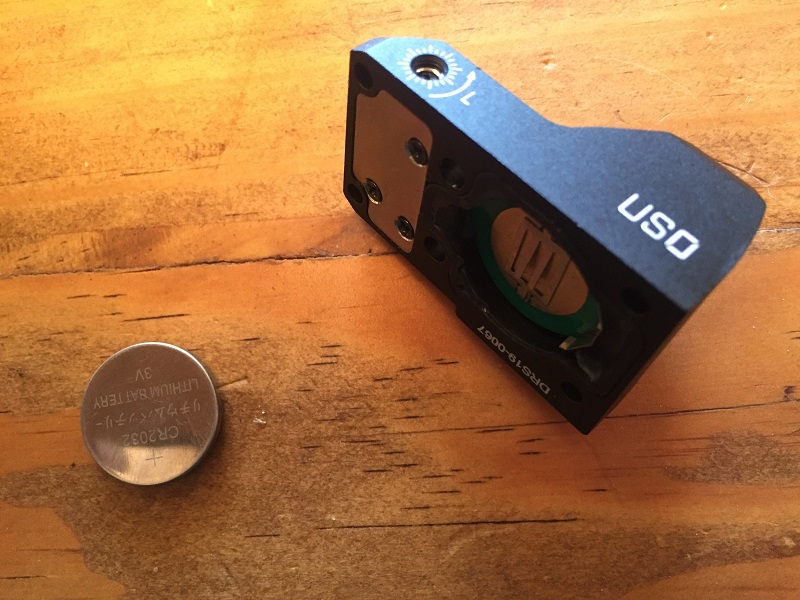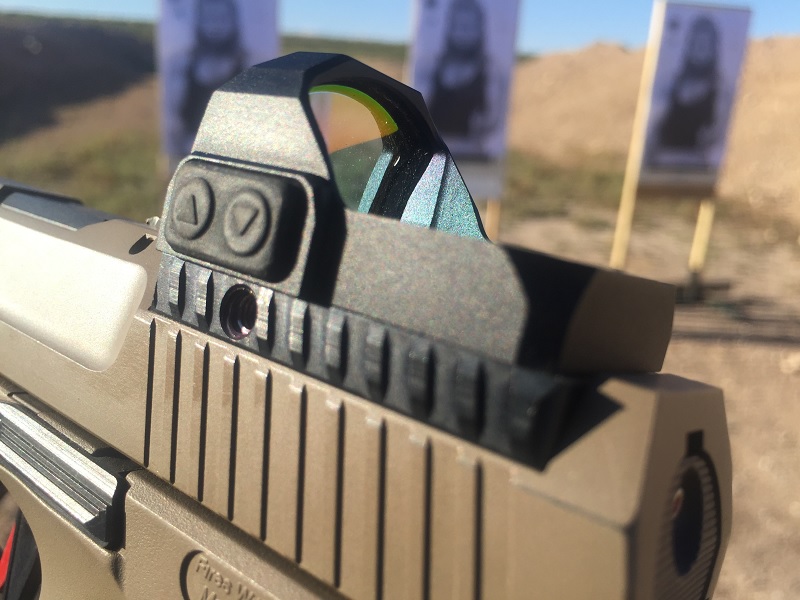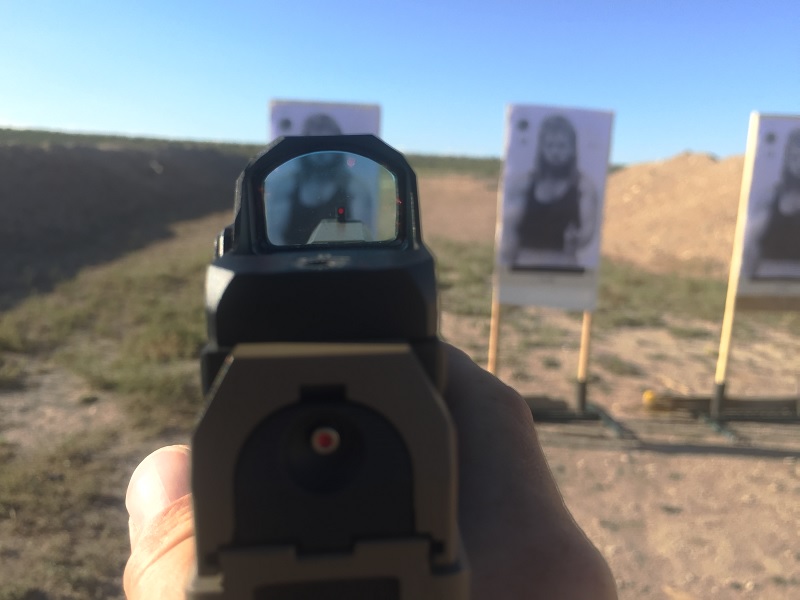US Optics Dynamic Reflex Sight (DRS) review
Eve Flanigan 06.12.19

There is no denying the advantages of a reflex sight, or red dot sight (RDS) for fast aiming. Despite a personal resistance to the concept of an RDS on a pistol – especially one that requires sacrificing the rear sight – I recently gave in and bought myself a US Optics Dynamic Reflex Sight (DRS). At $249, it’s the less expensive of two RDS models by US Optics.
The sight mount is compatible with the Vortex Viper base. Mounting was easy thanks to the supplied templates included with the pre-milled Canik TP9 Elite Combat pistol, which comes equipped with four common bases.

A lithium CR 2032 battery is included. One downside of this optic is the bottom-mounted battery; changing it is fortunately not a common occurrence as it requires removal of the sight from the slide.

The sight is housed in an aluminum case that so far appears sturdy. After three days of heavy range work, the black matte finish is still intact with no shiny spots.
Looking through the viewing window of the DRS, it’s easy to find a precise point of aim and, as with any handgun red dot, it’s fast once the angle of aim becomes habit. By comparison, the roomy window is reminiscent of the Vortex Viper. The 2-MOA dot has a wide span of brightness settings, making precision shots at distance immeasurably easier than with iron sights. At higher intensity settings, the dot appears larger, making it perfect for so-called combat accuracy at closer distances.
The sight must be turned on manually, using the intensity up/down buttons on the left side of the housing. If not purposely shut off using the downward-pointing arrow control, it shuts off on its own after 10 minutes. Though the auto-shutoff saves battery life, it’s a veritable nail in the coffin of any thought of serious defensive or duty use for this sight. Ain’t nobody got time to be turnin’ no sights on in a life-or-death situation.

Windage and elevation are easily adjusted when equipped with the tiny, provided screwdriver-end Allen wrench, which I managed to lose on Day 1 even after painting it fluorescent green. Thankfully, the small slotted screwdriver on a Leatherman tool works too. Hash marks are well-delineated and the dials are labeled.
With the optic zeroed at 25 yards, the DRS made me feel like a better shooter instantly, especially at distance. It took little effort to shoot a five-inch, five-shot group from 25 yards with the sight, something I struggle to do with iron sights. The ability to adjust the dot’s intensity makes a real difference when seeking pinpoint accuracy.
This was the first pistol red dot with which I’ve invested time, though I’ve fired a few rounds through many other brands. It quickly taught me that the mechanical hold-overs I’m so accustomed to using with a carbine RDS are much the same with a handgun. After firing at 175, 25, 15, 10, and three yards, I developed a fairly reliable feel for point of aim versus point of impact for closer distances. The big viewing area frees the shooter from having the view of the target area blocked by sights as can happen when aiming at small and/or distant targets with iron sights.

After three days of range work that included physical labor that banged on the housing from time to time, I expected this relatively inexpensive sight to lose its zero. So far it hasn’t.
The dot, which is both by name and literally red, is very visible even in bright sunlight. The sight also is night vision compatible.
US Optics projected retail availability of this sight in April 2019. On their website, it’s still on pre-order status.

I believe the US Optics DRS to be a reliable optic for handgun, and surely for carbine as well, though I haven’t mounted it on a rifle yet. The dot intensity adjustment makes for great versatility in close quarters or distance shooting. In the current market, no one red dot seems to have all the perfect traits rolled into one. While I believe this one to be tough and able to hold a zero, as well as a boon to accuracy, it has downsides. The 10-minute shutoff relegates the DRS to target shooting only. A bottom-mounting battery is time- and ammo-consuming, as zero will have to be re-checked after removing the optic for battery replacement. All things considered, it appears to be ready to hold its ground next to a few more expensive competitors’ models. At $249, if this one gets better publicity, I think it’ll be a big hit for first-time red dot buyers.

